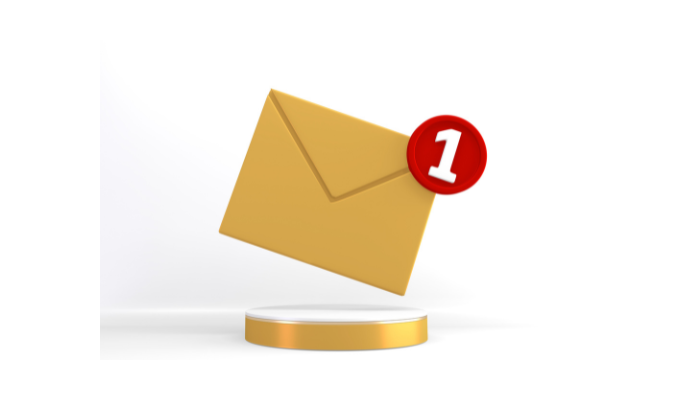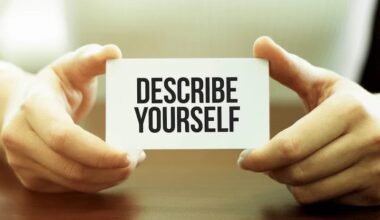Have you ever found yourself staring at your email draft, stuck on how to respond to a request or issue without sounding repetitive or informal?
Looking for ways to say “I will look into it” in an email? We’ve all been there, wondering if there’s a better way to say, “I will look into it.”
Well, I have good news! Elevating your email communication doesn’t have to be a daunting task.
When communicating via email, professionalism is essential to earning people’s trust and respect. “I will look into it,” is a typical statement that can get monotonous and may not always communicate the appropriate amount of formality.
You will find five formal substitutes for this expression in this piece, which will guarantee that your emails stay polished and businesslike.
Take a deep breath, and let’s explore the most appropriate methods to express “I will look into it” in an email.
The Importance of Professional Email Responses
Email is a key tool in today’s work world. It helps build professional relationships and keeps a strong brand image. It’s vital to write polite, responsive, and well-structured emails for success.
Your emails can greatly affect how others see you; like colleagues, clients, and potential partners. Here are a few importance of responding to emails.
Fostering Positive Relationships
A quick, kind, and helpful email can help build trust. When you take the time to understand and answer questions, it shows you care.
This can lead to more chances to work together, get more business, and move up in your career.
Maintaining a Professional Image
How you email can shape how others see you professionally. By carefully thinking through each email, you show you’re detail-oriented, good at solving problems, and dedicated to doing great work.
A well-thought-out email shows you’re professional, reliable, and an expert in your field.
Professional email responses are very important. Improving your email skills and being polite, quick, and organized helps you build good relationships, keep a strong professional image, and set you up for success over time.

Formal Ways to Say I Will Look Into it in an Email
When you answer emails, it’s key to avoid saying “I will look into it” over and over. Instead, try using different words that show you’re professional and quick to act.
These words show you’re serious about solving the problem quickly and well.
1. “I Will Investigate the Matter”
- Context: Use this phrase when the issue requires thorough analysis or detailed examination. It’s suitable for scenarios where the problem is complex and needs a systematic approach.
- Example Usage:
- Email to a Client: “Thank you for bringing this to our attention. I will investigate the matter and provide you with an update by the end of the week.”
- Email to a Colleague: “I’ve noted your concern regarding the recent project developments. I will investigate the matter and discuss the findings in our next team meeting.”
2. “I Will Review the Details”
- Context: Appropriate for situations where you need to go through specific information or documents before responding. It indicates that you will take the time to understand the particulars.
- Example Usage:
- Email to a Customer: “I appreciate your feedback on the recent service. I will review the details and get back to you with a resolution within two business days.”
- Email to a Manager: “Regarding your request for the quarterly report, I will review the details and ensure that all necessary information is included.”
3. “I Will Examine the Situation”
- Context: Best used when you need to assess the overall context of a situation. This phrase conveys a comprehensive approach to understanding the issue at hand.
- Example Usage:
- Email to a Business Partner: “Your concerns about the contract terms are valid. I will examine the situation and arrange a meeting to discuss possible adjustments.”
- Email to a Team Member: “I understand the challenges you’re facing with the current project. I will examine the situation and see how we can address these issues effectively.”
4. “I Will Look into This Further”
- Context: Suitable for follow-ups or when the initial review indicates that a more detailed investigation is required. It suggests a commitment to a deeper examination.
- Example Usage:
- Email to a Supplier: “Thank you for the information provided. I will look into this further and get back to you with our next steps.”
- Email to a Peer: “I’ve received your concerns about the recent changes. I will look into this further and we can discuss potential solutions during our next check-in.”
5. “I Will Explore the Options”
- Context: Ideal for situations where multiple solutions or approaches need to be considered. It indicates a proactive effort to find the best possible outcome.
- Example Usage:
- Email to a Client: “We appreciate your patience regarding the delivery issue. I will explore the options available and contact you with the best possible resolution.
- Email to a Supervisor: “Regarding the new policy implementation, I will explore the options and present you with a detailed plan next week.”

Tips for Crafting Polite and Effective Email Responses
Writing polite and effective emails is key to keeping professional relationships strong and making a good impression.
When you write, make sure your grammar is correct and your tone is professional. Stay away from slang, abbreviations, and negative words.
Instead, focus on giving value and context to the person reading your email.
Use Proper Grammar and Tone
It’s vital to have your emails well-received. Check your grammar and use the right punctuation and sentence structure.
Aim for a polite and respectful tone, even when talking about tough topics. This shows you care about clear and effective communication.
Provide Value and Context
When you reply to an email, make sure you give the person all the info they need. Clearly explain what steps you’ll take to solve their problem, like looking into the issue or checking the request.
Also, share any useful resources or more information they might find helpful. This way, your emails will be appreciated and leave a good impression.
Remember, it is not just what you say in your emails that matters, but how you say it. By following these tips, you can make your emails professional and informative.
This will help you build stronger relationships with your colleagues and clients.
Examples of Professional Email Responses
Writing a professional email is key to doing well at work today. You might be talking to customers, job seekers, sales leads, or other important people.
How you answer can affect your relationships and how others see you. We’ll look at some examples of professional emails to help you with yours.
Scenario 1: Responding to a Customer Inquiry
- Situation: A customer has reported an issue with their recent purchase and is seeking assistance.
- Email Example:
Subject: Re: Issue with Recent Purchase
Dear [Customer’s Name],
Thank you for reaching out and bringing this to our attention. I apologize for any inconvenience this may have caused.
I will investigate the matter thoroughly and provide you with an update by the end of the week. In the meantime, please let me know if there are any additional details you can share that might help us resolve this issue more efficiently.
Thank you for your patience and understanding.
Best regards,
[Your Name]
[Your Position]
[Your Contact Information]
Scenario 2: Addressing a Colleague’s Concern
- Situation: A colleague has raised a concern about the progress of a shared project.
- Email Example:
Subject: Re: Concerns about Project Progress
Hi [Colleague’s Name],
Thank you for your email and for expressing your concerns regarding our project.
I will review the details and see how we can address the issues you’ve highlighted. Let’s schedule a meeting for next Tuesday to discuss this further and come up with a plan to get back on track.
I appreciate your diligence and look forward to resolving this together.
Best,
[Your Name]
[Your Position]
Scenario 3: Replying to a Supervisor’s Request
- Situation: A supervisor has requested additional information about a recent report.
- Email Example:
Subject: Re: Additional Information on Quarterly Report
Dear [Supervisor’s Name],
Thank you for your request for more details on the quarterly report. I appreciate your attention to detail and understand the importance of thoroughness in our documentation.
I will examine the situation and ensure that all relevant data and insights are included. You can expect an updated report by Wednesday.
Please let me know if there are any specific areas you would like me to focus on.
Best regards,
[Your Name]
[Your Position]
Scenario 4: Following Up on a Supplier Issue
- Situation: A supplier has reported a delay in the delivery of materials.
- Email Example:
Subject: Re: Delivery Delay Issue
Dear [Supplier’s Name],
Thank you for informing us about the delay in delivery. I understand the impact this can have on our operations.
I will look into this further and explore the options available to mitigate any disruptions this delay might cause. I will contact you by tomorrow with our proposed course of action.
Thank you for your cooperation.
Sincerely,
[Your Name]
[Your Position]
Scenario 5: Managing a Team Member’s Request
- Situation: A team member has requested additional resources for a project.
- Email Example:
Subject: Re: Request for Additional Resources
Hi [Team Member’s Name],
Thank you for bringing this to my attention. I understand the necessity of having the right resources to achieve our project goals.
I will explore the options and determine how we can best allocate resources to support your work. Let’s discuss this in our next team meeting scheduled for Thursday.
Your dedication to the project is much appreciated.
Best,
[Your Name]
[Your Position]
Looking at these examples can help you make your emails more professional and effective. It can also help you build better relationships with your stakeholders.

Common Pitfalls in Email Communication to Avoid
Writing professional emails is key, but avoiding common mistakes is just as crucial. One big mistake is sending long, unclear emails. It’s better to keep your messages short and to the point, focusing on what the recipient needs.
When you’re looking into something, it’s important to be clear and organized. Skip the jargon and details that aren’t needed.
Below are other pitfalls to avoid;
- Focus on the main points to give a clear answer.
- Make sure your grammar, spelling, and tone are professional. Think about the situation and check your email to make sure it’s effective.
- Use clear and brief language in your emails.
- Organize your thoughts and present them logically.
- Check your emails for grammar and spelling mistakes.
- Keep a professional and polite tone in your messages.
By avoiding these mistakes, your emails will be clear, helpful, and well-received.
The Role of Email Signatures in Professional Correspondence
Your email signature is more than just your name and contact info. It’s a chance to show off your professional side.
Adding your name, title, and contact details can make your brand stand out. A good email signature can make you look more polished and reliable.
Enhancing Your Brand Identity
Email signatures are great for showing off your brand. Out of the 62% of brands that use email signatures for marketing, 82% do so to spread brand awareness.
Adding your logo and brand colors makes your emails memorable.
Also, 48% of brands use email signatures to drive traffic to their website, and 34% for lead generation.
Putting links or calls-to-action in your signature can help with marketing goals. It also makes your contact info look professional.
Since 42% of emails are opened on mobile devices, your signature must be mobile-friendly. A clean design that works on all screens is key. This keeps your signature effective everywhere.
Adding social media icons or photos to your signature can make you seem more approachable. It shows you’re professional.
Adding pronouns can also make your emails more inclusive.
Email signatures let you investigate, examine, review, inquire, explore, delve, analyze, assess, and scrutinize your emails.
They help you build a strong brand identity and make a lasting impression.
Best Practices for Timely Follow-Up Emails
In the world of professional email, responding quickly is crucial. It shows you care about customer service and keeps business relationships strong. Following up on requests or actions promptly is key to a good reputation.
Experts say to wait two to three days before your first follow-up email. This lets the recipient answer your first message. Then, space out follow-ups over about six emails. This keeps you in mind without being too much.
Make your follow-up emails personal. Use the recipient’s name and talk about your previous conversation. Show you’ve looked into the matter or reviewed the request. Include a clear action step, like asking about the concern or exploring the query.
Gratitude at the end of your email can make a big difference. It can make people more likely to respond positively.
Good follow-up emails are both professional and personal. Use a clear subject line that explains the situation. In the email, explain the details and show you understand what the recipient needs.
Using these tips for follow-up emails can make your communication better. It can also strengthen your relationships with clients, colleagues, and partners. A good follow-up plan can lead to success and make you stand out in your field.

Conclusion
Mastering how to respond to emails professionally is key in today’s business world. Using phrases like “I will investigate the matter” instead of “I will look into it” makes your messages more effective.
These phrases show you’re serious and ready to help.
Being consistent in your professional email tone helps build strong relationships. It also makes your brand look better and leaves a good impression.
This can lead to better business partnerships and happier customers, making you a go-to professional.
This article has given you great tips to improve your email skills. By using these strategies every day, you’ll stand out in the business world.
You’ll be confident and successful in your professional emails.
You may also be interested in this article 7 Formal Ways to Say You Can Reach Me At in an Email






